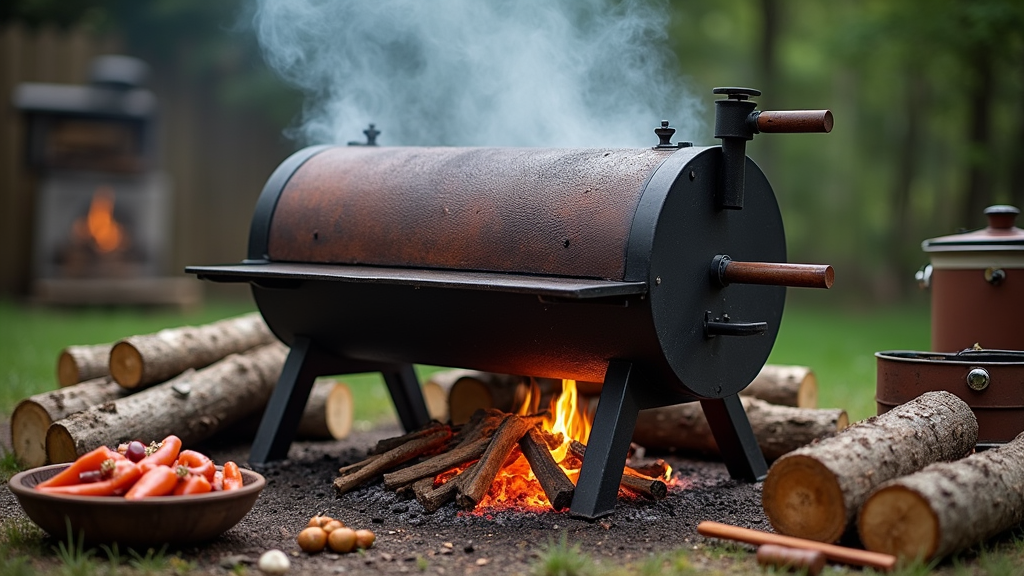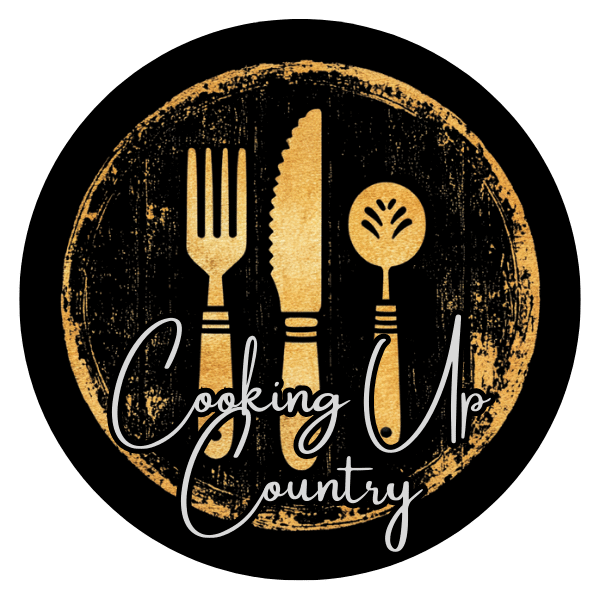Southern barbecue stands out as one of America’s most deeply rooted cooking traditions. I’ve seen how its smoky flavors and community rituals bring people together, from family cookouts to local festivals. The history of Southern barbecue is long and colorful, connecting traditions from Native Americans, Africans, and Europeans into the unique styles we recognize today. I’m getting into its story by exploring the earliest pitmasters, the transformation into modern barbecue culture, and how African American cooks played a super important role in shaping what we taste on our plates now.

How Southern Barbecue Got Its Start
Southern barbecue came from a blend of cooking traditions brought together as cultures mixed in the American South. Some of the earliest barbecue practices go back to Indigenous peoples, who slow cooked meat over fire pits. This technique was then adopted by European settlers, especially from Spain and the Caribbean, who brought ideas like marinating meat and using wood smoke for flavor.
Barbecue as we know it really took off in the 18th and 19th centuries, especially in the Carolinas, Tennessee, Texas, Georgia, and Alabama. Local woods such as hickory, oak, and pecan gave the meat its signature taste. Pork became the favorite meat, partly because pigs were easy to raise, roam, and cure. These early cookouts were a way to share food, build bonds, and celebrate community milestones.
Southern barbecue grew into a social experience. Whether it was at a church picnic, a political rally, or a family reunion, barbecue always meant gathering with good food and community ties. Over time, regions began to develop their own sauces and sides. The Carolinas earned fame for vinegar based sauces, Memphis for rib rubs and tomato based sauce, and Texas for beef brisket with bold peppery flavor. These regional differences still shape the barbecue you taste today. Southern Living covers even more about classic southern BBQ styles.
From the Pit: The Roots of Traditional Pit Barbecue
Pit barbecue has a long history as one of the oldest and most authentic ways to cook meat in the South. For generations, cooks dug pits into the ground. I’ve been lucky enough to see one of these setups. The pit is lined with hot coals and wood, and the meat cooks slowly over the smoky heat for hours or even overnight. The result: juicy, tender meat full of real, smoky flavor that’s hard to find anywhere else.
Pitmasters developed unique techniques and secret ways of seasoning meat. Some covered the pit with a metal sheet or wood plank, while others wrapped the meat in cloth, letting it cook gently over slow heat. By the late 1800s and early 1900s, roadside barbecue stands and small smokehouses started popping up, bringing this traditional style to more people.
Modern barbecue cookers, like offset smokers and barrel grills, were inspired by these early pits but make it easy to control heat, smoke, and moisture. Plenty of barbecue fans today still chase that classic taste and the camaraderie that surrounds true pit-cooked meat. That tradition is part of what keeps barbecue culture thriving from one generation to the next.
The African American Impact on Southern Barbecue
African Americans played a huge part in developing, perfecting, and spreading barbecue in the South. Enslaved Africans brought important smoking and seasoning know-how. Over time, African American cooks earned reputations as master pitmasters, shaping barbecue culture from the roots up.
Many iconic barbecue spots began as small, family run businesses, passed through generations of African American families. These cooks often worked behind the scenes at big white owned barbecue events, but others built their own businesses, even during the toughest years of legal segregation. Their creativity showed up in everything, from spice blends to homemade smoker design, and especially in regional rubs and sauces that are now must-haves for barbecue fans across the country.
Barbecue also became a centerpiece for African American church gatherings, civil rights meetings, and family celebrations. It gave a sense of identity and closeness—a way to earn a living and create community pride. NPR has a super detailed piece that digs into these key contributions.

The Birth of Modern Barbecue Culture
Today’s barbecue scene didn’t take shape overnight. The switch from traditional pit barbecue to “modern barbecue” happened gradually. In the early 20th century, better equipment changed how barbecue got cooked. Metal smokers, commercial spice rubs, and bottled sauces made barbecue more widely available and helped it spread beyond its Southern roots.
Barbecue restaurants started opening in cities, often turning this once rural activity into both business and local attraction. In the 1940s and 50s, drive-in barbecue joints and diners really took off. That’s when barbecue culture became more about tasting different styles and socializing, not just cooking meat for survival. Many pitmasters combine old family traditions with fun new twists, using fruit woods, international spices, and creative side dishes.
Barbecue competitions and television shows (like BBQ Pitmasters) helped shine a light on the art of barbecue. These events have made certain pitmasters into local legends and inspired people everywhere to get involved with low and slow cooking. Yearly competitions now pull together cooks from every corner of the country, highlighting creativity and passion for the craft.
Common Styles of Southern Barbecue
It can get confusing to tell barbecue styles apart, especially for beginners. Here’s a simple breakdown, based on what I’ve tasted across the South:
- Carolina Style: Known for pulled pork, sometimes chopped pork, and a sharp vinegar or mustard based sauce. Sides typically include coleslaw and hushpuppies.
- Memphis Style: Famous for pork ribs, either “dry” (with a spicy rub) or “wet” (with a tomato based sauce). Usual companions are baked beans and slaw.
- Texas Style: Here, beef is king—mainly brisket—rubbed with just salt and black pepper, smoked until tender, and served with pickles, onions, and plain white bread.
- Alabama Style: Chicken with white barbecue sauce—a unique mayo and vinegar mix. Pork and ribs stay popular, cooked over hickory wood.
- Kentucky Style: Features mutton (older sheep), paired with a thin, tart “black dip” sauce and usually burgoo stew as a tasty side.
Every style has devoted fans and its own festivals. In my experience, tasting them for yourself is the best way to get a sense of what makes each one special, whether you eat at a roadside shack or hit up a big food festival.
Tips for Enjoying and Making Southern Barbecue
- Start Small: Don’t get bogged down by gear or fancy talk. I first used a simple kettle grill and natural charcoal, and it still makes great food.
- Pick the Right Wood: Hickory, oak, and pecan bring deep flavor to pork. Mesquite works wonders for beef. Fruitwoods such as apple and cherry offer a lighter smoke for chicken or ribs.
- Go Low and Slow: The traditional way cooks meat at a low temperature (about 225°F to 275°F) for hours. If you speed through, you risk tough meat.
- Mix Up Your Sauces: Taste different styles: vinegar, tomato, mustard, or Alabama’s white sauce. Homemade sauces are fun to try, but local favorites from markets are often outstanding.
- Let Meat Rest: After you’re done smoking, let your meat rest a bit before slicing. It keeps juices inside and really bumps up the flavor and texture.
Frequently Asked Questions About Southern Barbecue
Question: How far back does Southern barbecue go?
Answer: Its roots stretch back to the 16th and 17th centuries. It started with Indigenous slow cooking methods, then mixed with European and African traditions during colonization and times of slavery.
Question: When was what we call “modern” barbecue invented?
Answer: The move to modern barbecue began early in the 20th century, as commercial smokers and restaurants appeared, and really flourished after World War II, thanks to barbecue chains, festivals, and media coverage.
Question: What makes pit barbecue unique?
Answer: Pit barbecue is about cooking meat in a covered hole or pit over burning wood coals, slowly, for hours. This technique gives a rich smoky taste and an amazingly tender texture to the meat.
Question: What is the story of barbecue in African American communities?
Answer: African American cooks and pitmasters shaped barbecue’s flavors, techniques, and business side. Many beloved barbecue joints began in black communities, continuing to serve as places for great meals and preserving history.
How Southern Barbecue Keeps Evolving
Southern barbecue is always changing, as every generation adds new touches. Barbecue is being reinvented in city restaurants, food trucks, and creative combinations with global flavors. Despite these changes, patience, deep flavor, and togetherness are still at the heart of barbecue. From backyard gatherings to upscale dining spots, the spirit of community lives on and strengthens the tradition with each passing year. To really appreciate southern barbecue’s appeal, track down a few time-honored barbecue joints and chat with their cooks—you’ll soon stumble upon the secrets that keep Southern barbecue so special.
